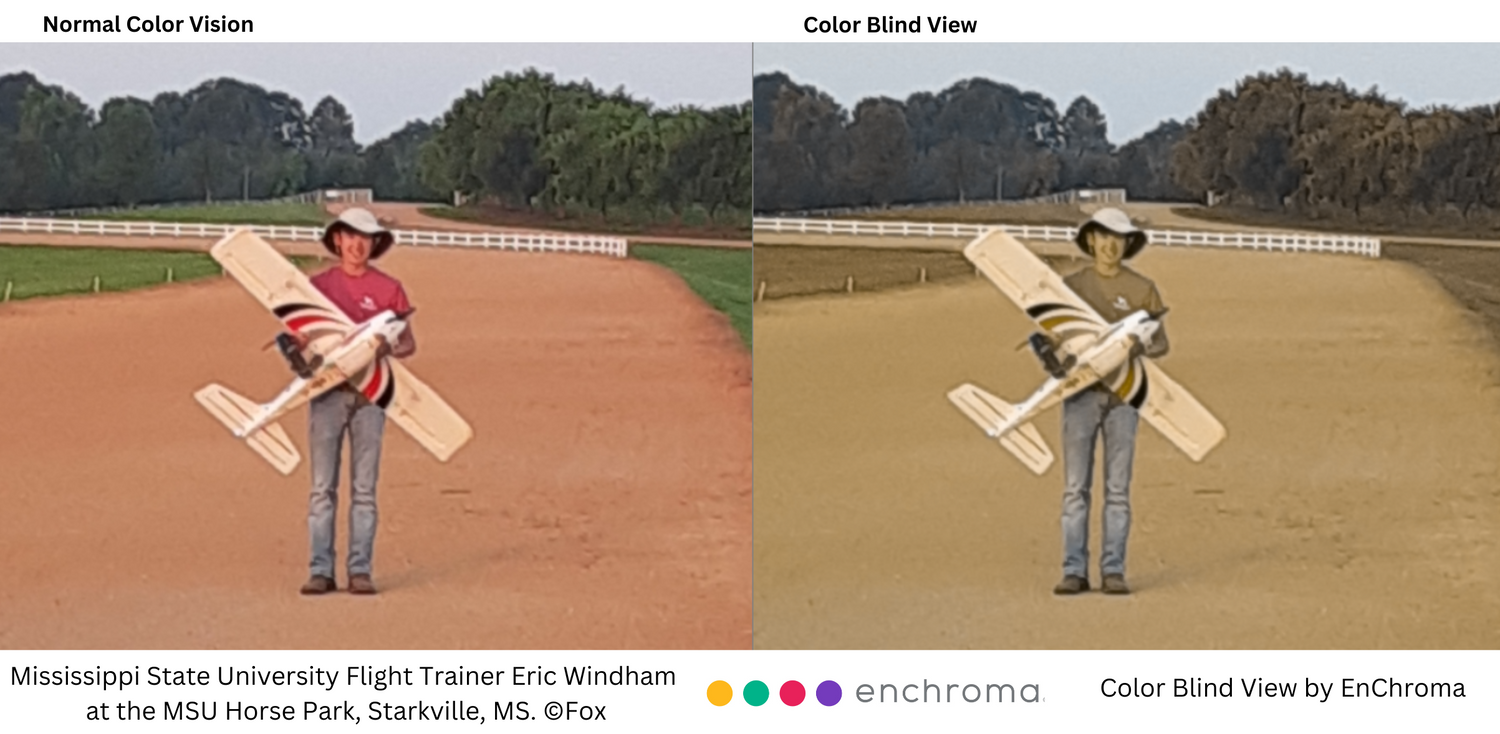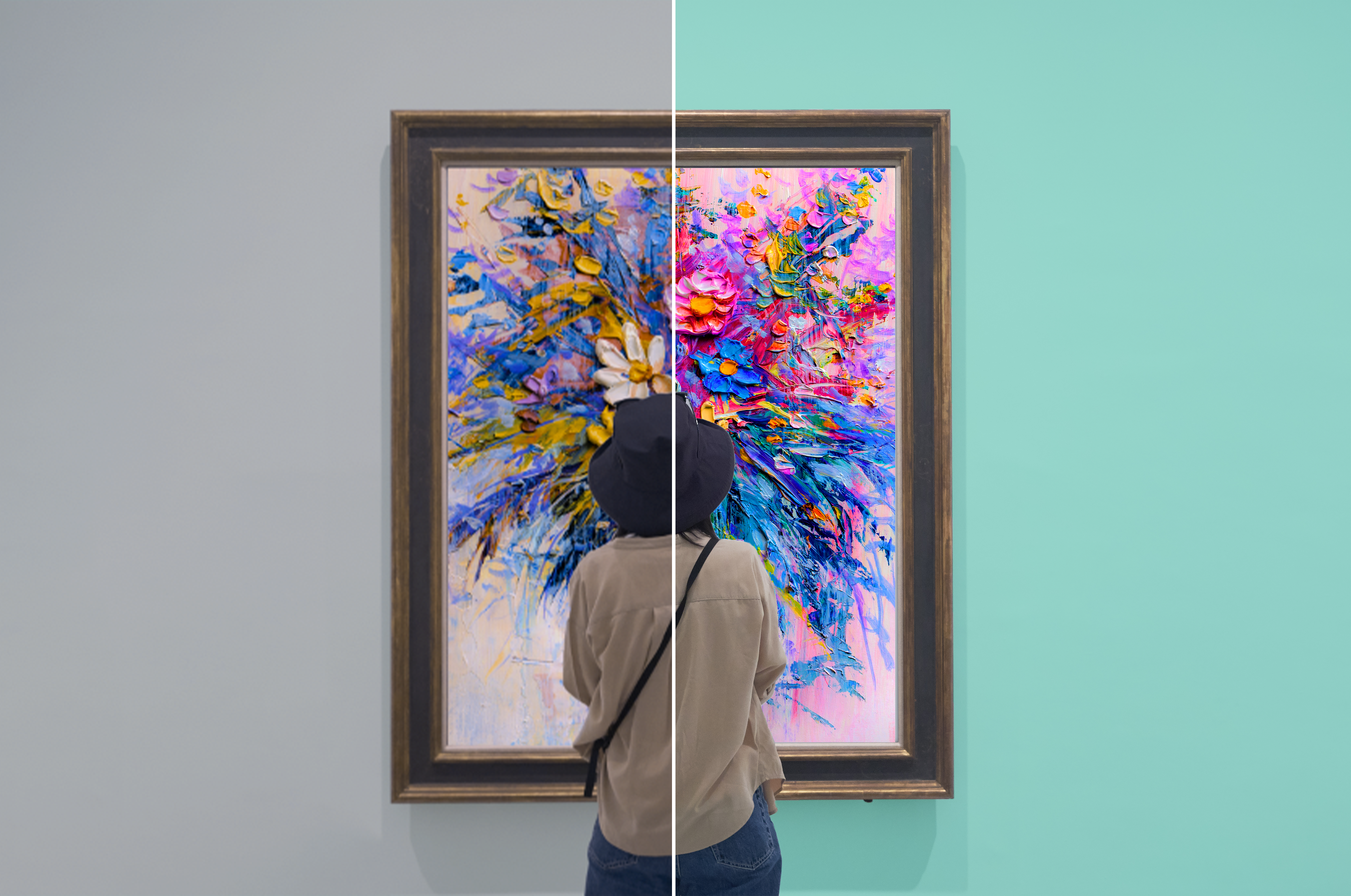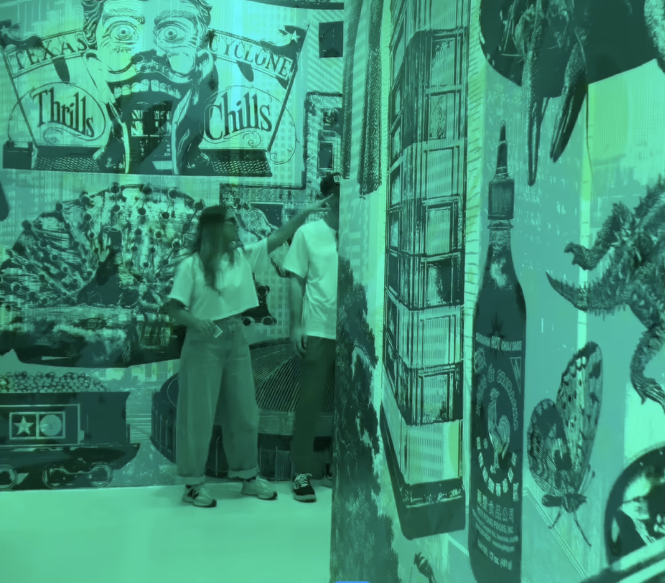Mississippi State University (MSU), in a groundbreaking move, recently partnered with EnChroma to assist students and faculty who are red green colorblind (Color Vision Deficient (CVD). This collaboration marks a significant stride in educational inclusivity, aiming to lower the frustrations and obstacles often faced by those in academic environments who suffer from red-green colorblindness. Different types of colorblindness affect over 350 million people worldwide, including an estimated 1,200 of the nearly 28,000 students at MSU. Since color blind people only see about 10% of the reds and greens those with normal color vision see, the challenges it poses range from everyday struggles to distinguish red and green traffic lights to interpreting color-coded information in educational materials. Since an estimated 80% of information is conveyed visually, and much of it contains colors – often reds and greens – schoolwork with colors can cause confusion for students who are red green colorblind.
MSU Leads the Way
Recognizing these hurdles, MSU's faculty from the plant and soil sciences and geosciences departments took the commendable step to integrate EnChroma glasses into their teaching resources, thereby lowering hurdles and fostering a more inclusive learning atmosphere for those with red-green color blindness. The initiative, spearheaded by Amelia Fox, assistant clinical professor of plant and soil sciences, and Renee Clary, a professor in geosciences, underscores MSU's commitment to student success and educational equity. Both professors, driven by a shared dedication to enhancing the academic experience for students with various types of colorblindness, have rallied support across departments to make these specialized glasses available for campus-wide use.

Helping Students
EnChroma glasses, though not a cure for color blindness, offer approximately 80% of individuals with red-green colorblindness (deuteranomaly or protanomaly) the potential to experience an expanded range of visible color. By enhancing the differentiation between colors, the glasses can help most red green colorblind students better understand projects and schoolwork that involves colors. For example, in the Department of Plant and Soil Sciences, color blind students can better navigate drone orientation and flight sequences that rely on various colored lights, monitors and tags, while geosciences students can gain clearer insights into map topography and rock classifications that utilize variations of red and green.
EnChroma facilitates the provision of its glasses to organizations that seek to loan them to the public, or students, to enhance ‘color accessibility’ and inclusion. MSU's inclusion in this program places it among an elite group of institutions such as Boston University, North Carolina State University, the University of North Carolina, Alfred University, the University of Hamburg and others that are also supporting their colorblind students.
EnChroma Lends a Hand
Available for both indoor and outdoor use, the glasses are available for loan at MSU’s main campus library and the College of Agriculture and Life Sciences. This initiative highlights MSU's proactive approach to accessibility on campus.
As MSU continues to lead by example, the impact of this initiative extends beyond the campus. It serves as a beacon for other educational institutions to follow suit and incorporate tools and strategies to accommodate all students' needs. In addition to making EnChroma glasses available, this includes adjusting the colors educators and communications staff at universities use in schoolwork and on campus to better accommodate the one in 12 men (8% and one in 200 women (.5%) who are color blind, which includes 13 million in the US alone.
This initiative by Mississippi State University, in partnership with EnChroma, is not just about providing access to innovative tools; it's about affirming the value of every student's educational journey, regardless of the challenges they may face.

How Do Colorblind Glasses Work?
Several scientific studies have shown that EnChroma glasses enable most people with red-green color blindness to see an expanded range of colors. The glasses are not a cure for color blindness, do not deliver 100% color vision, and do not work for all types of colorblindness. They work for approximately 8 out of 10 people with red-green color blindness, specifically those with Deuteranomaly or Protananomy. A wearer must have all three of the color cones in their retina functioning properly to benefit from EnChroma eyewear. Reaction times and results vary. To learn more please visit enchroma.com.



